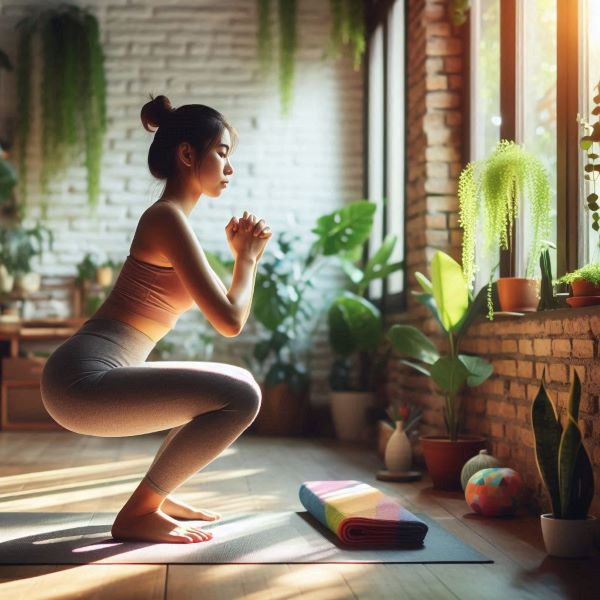Malasana, known as the Garland Pose in English, is a squatting pose that is commonly used in yoga practice to open the hips and stretch the lower back. The name “Malasana” comes from the Sanskrit words “Mala” meaning garland and “Asana” meaning pose. This posture is highly beneficial for enhancing flexibility, balance, and overall body alignment.
History
Malasana has roots in traditional Hatha yoga, and it has been practiced for centuries as a natural resting pose. In many cultures, squatting is a common position for various activities, and it has been incorporated into yoga to harness its numerous physical benefits. Over time, Malasana has gained popularity for its ability to open the hips and prepare the body for more complex poses.
How to Do Malasana
To perform Malasana correctly, follow these steps:
- Starting Position: Stand at the top of your yoga mat with your feet hip-width apart.
- Squatting Down: Slowly bend your knees and lower your hips down into a deep squat. Your feet should be flat on the ground, and your toes can point slightly outward for better balance.
- Position the Arms: Bring your palms together in a prayer position (Anjali Mudra) at your heart center. Use your elbows to gently press your knees apart, helping to open your hips.
- Straighten the Spine: Lengthen your spine and lift your chest, ensuring your back is straight. Avoid rounding your back or hunching your shoulders.
- Relax and Breathe: Close your eyes if comfortable and take deep, slow breaths. Focus on relaxing your hips and lower back with each exhalation.
- Hold the Pose: Stay in Malasana for 30 seconds to 1 minute, or as long as comfortable, maintaining steady breathing.
- Exiting the Pose: To come out of the pose, straighten your legs slowly and return to a standing position, bringing your arms down by your sides.
Health Benefits
Malasana provides numerous health benefits, including:
- Opens Hips: Stretches and opens the hips, increasing flexibility and range of motion.
- Strengthens Legs: Builds strength in the thighs, calves, and ankles.
- Improves Digestion: Massages the abdominal organs, aiding digestion and relieving bloating.
- Enhances Balance: Improves balance and coordination.
- Reduces Lower Back Pain: Alleviates tension and discomfort in the lower back.
- Promotes Circulation: Enhances blood circulation in the pelvic region.
Also, read: All you need to know about Yoga Pose Makarasana- Crocodile Pose
Who Should Do Malasana
Malasana is suitable for most people, especially those who:
- Want to improve hip flexibility and mobility.
- Experience lower back pain and need a gentle stretch.
- Seek to enhance balance and stability.
- Want to strengthen the legs and ankles?
- Look for a pose to improve digestion.
Who Should Not Do Malasana
While Malasana is generally safe, certain individuals should take precautions:
- People with knee injuries or severe knee pain should avoid this pose or consult a healthcare professional before practicing.
- Those with lower back injuries should perform the pose with caution or seek guidance from a qualified yoga instructor.
- Pregnant women should practice a modified version of Malasana and avoid deep squats.
Precautions
- Ensure you perform Malasana on a stable, non-slip surface to avoid slipping.
- Do not strain your knees or lower back while in the pose.
- If you experience any pain or discomfort, gently come out of the pose and rest.
- Use props like a folded blanket or yoga block under your heels if you have difficulty keeping your feet flat on the ground.
References and Sources
This article is original and designed to provide a comprehensive overview of Malasana, ensuring it is informative and beneficial for readers interested in yoga.





